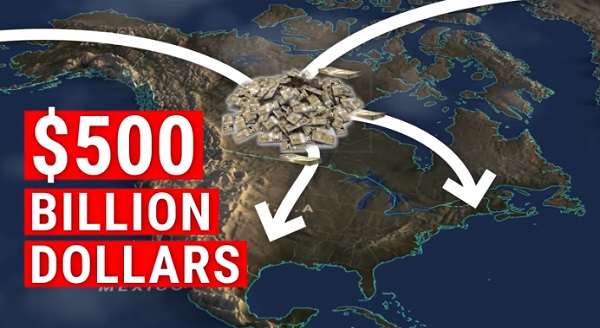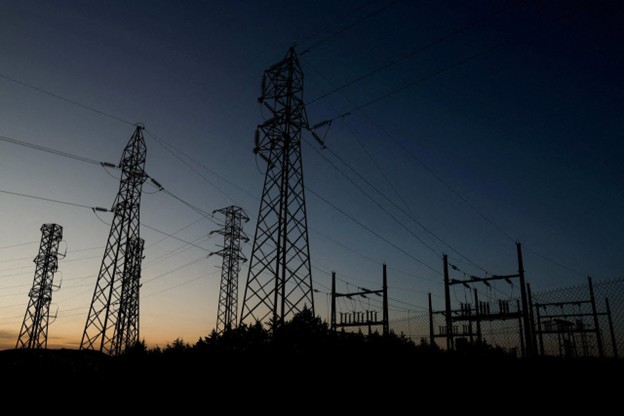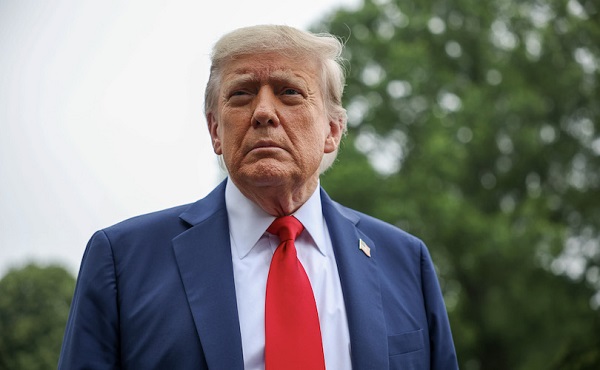Censorship Industrial Complex
Chinese firms show off latest police-state surveillance tech at security expo

From LifeSiteNews
By Angeline Tan
45 Chinese firms have showcased their latest police-state products and technologies, with one expert warning that the communist nation is doing so to normalize their method of surveillance and have it adopted abroad.
45 Chinese firms have showcased their latest police-state products and technologies, including state-of-the-art CCTV, precise DNA-testing technology and intrusive facial tracking software, at the inaugural Public Security Tech Expo in Lianyungang, located in China’s Jiangsu province.
Hosted by China’s First Research Institute of the Ministry of Public Security, the 6-day tech expo which began on September 7 showed off advanced technologies in the domains of “criminal technology, police protective equipment, traffic management equipment, anti-terrorism rescue, and command and communication,” according to the forum’s website.
The website’s official description says “the main purpose of holding the Public Security Tech Expo (Lianyungang) under the framework of the Forum is to deepen technical exchanges and international cooperation in the field of public security science and technology equipment, share useful experience in the application of science and technology equipment to public security practice, and jointly improve the ability and level of maintaining public security.”
One firm participating in the expo, Caltta Technologies, featured a project aimed at “helping” the southern African nation of Mozambique establish an “Incident Response Platform,” extolling its abilities to harness data in “rapid target location.”
Tech giant Huawei was also at the expo, boasting that its “Public Safety Solution” is currently used in more than 100 countries and regions, from Kenya to Saudi Arabia. The United States sanctioned Huawei in 2019, castigating the firm as “an arm” of the Chinese surveillance state.
The expo also saw China’s Ministry of Public Security’s Institute of Forensic Science show off its new high-tech DNA testing technologies. In 2020, Washington banned the institute from accessing some U.S. technology after a number of Chinese firms decried the institute as being “complicit in human rights violations and abuses.”
In 2018, the U.S. Treasury stated that residents of Xinjiang “were required to download a desktop version” of the app “so authorities could monitor for illicit activity.”
Communist China has been slammed for jailing over one million Uyghurs and other Muslim minorities in Xinjiang – claims Beijing vehemently denies. Nonetheless, critics have pointed out how China’s surveillance technologies have been used to draconically suppress dissidents in the Xinjiang province.
During the expo’s opening ceremony, China’s police minister praised Beijing for training thousands of overseas police officers this past year – and pledged to aid in the training of thousands more over the coming year.
Reacting to these disturbing developments, especially China’s activity abroad, Bethany Allen at the Australian Strategic Policy Institute said, “Beijing is hoping to normalize and legitimize its policing style and… the authoritarian political system in which it operates.”
According to UCA News, “China is one of the most surveilled societies on Earth, with millions of CCTV cameras scattered across cities and facial recognition technology widely used in everything from day-to-day law enforcement to political repression.”
The same UCA News article added:
Its police serve a dual purpose: keeping the peace and cracking down on petty crime while also ensuring challenges to the ruling Communist Party are swiftly stamped out.
Notably, various foreign police officers said they hoped to use Chinese surveillance technology to police their own countries.
“We can learn from China,” said Sydney Gabela, a major general in the South African police service, according to UCA News.
“We wanted to check out the new technologies that are coming out so that we can deploy them in South Africa,” Gabela said.
China’s notoriety for being a highly-surveilled state goes back a long way. In 2023, The Economist ran an article detailing how the prevalence of CCTV cameras in Communist China, many bedecked with facial-recognition technology, “leave criminals with nowhere to hide.” A September 2019 report by the U.S. Commission on International Religious Freedom (USCIRF) also disclosed that “the Chinese government has increasingly employed advanced technology to amplify its repression of religious and faith communities.”
The executive summary of the same USCIRF report stated:
Authorities have installed surveillance cameras both outside and inside houses of worship to monitor and identify attendees. The government has deployed facial recognition systems that are purportedly able to distinguish Uighurs and Tibetans from other ethnic groups. Chinese authorities have also collected biometric information—including blood samples, voice recordings, and fingerprints—from religious and faith communities, often without their consent. The government uses advanced computing platforms and artificial intelligence to collate and recognize patterns in the data on religious and faith communities. Chinese technology companies have aided the government’s crackdown on religion and belief by supplying advanced hardware and computing systems to government agencies.
Censorship Industrial Complex
Jordan Peterson reveals DEI ‘expert’ serving as his ‘re-education coach’ for opposing LGBT agenda
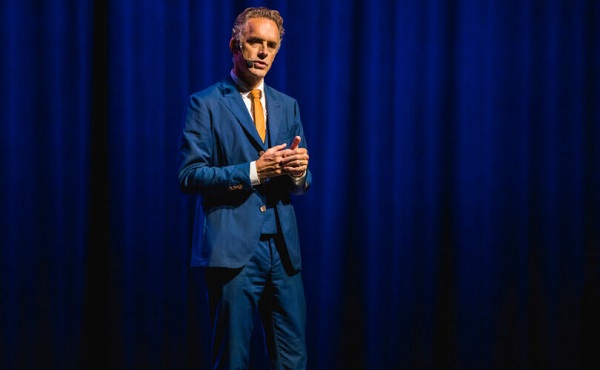
From LifeSiteNews
The Ontario College of Psychologists has selected Jordan Peterson’s “re-education coach” for having publicly opposed the LGBT agenda.
In a June 16 op-ed published by the National Post, Canadian psychologist Dr. Jordan Peterson revealed that U.K. citizen Harry Cayton will guide him through the mandatory training.
“In the last week … the College has re-established contact, after months of unnecessary delay, which occurred in violation of their own order and guidelines. They have made me an entirely new offer, all the while insisting that this was their intent all along, which it most clearly was not,” Peterson said.
“All they really want, it turns out, is one two-hour session, which will not involve any ‘social media’ training,” he further explained. “This will be conducted by a man — one Harry Cayton — a citizen of the U.K., who is neither social media expert, according to the College and is definitely not a psychologist.”
Harry Cayton, a supposed expert on “professional regulation and governance,” is known professionally for promoting Diversity, Equity, and Inclusion (DEI) initiatives.
In 2021, he was appointed to conduct an independent review of the British Columbia Law Society’s governance structure, specifically examining how it supports DEI goals.
Additionally, in 2022, while appearing on Ascend Radio’s podcast, Cayton argued there should be more DEI regulations in professional associations.
Peterson has promised to make the details of his “re-education” public, questioning why the College wishes to hide what Cayton plans to discuss with him.
“If I am the intransigent fool, and he is the wizard to set things right, why not bless everyone interested with his wisdom, and allow them to participate in the restructuring of my psyche and eventual enlightening? Why the concern with confidentiality?” he asked.
Peterson also explained that he will publicize the training “so that people who are interested can decide for themselves what is going on.”
In January 2024, Peterson lost his appeal of the board’s decision to compel him to undergo mandatory re-education, meaning that he must attend the training or risk losing his license to practice psychology in Ontario.
Peterson also revealed that his “legal options have” now “been exhausted” after Ontario’s highest court rejected his appeal of the College’s 2022 ruling that his public political statements ran afoul of the administrative board’s rules and that he must therefore submit to, and personally pay for, a “coaching program” on professionalism.
Peterson is a widely-known critic of Canada’s increasingly totalitarian government. He has also spoken frequently on the need for young men to accept and take on personal responsibility. While he has seemingly inspired others to explore Christianity, he has not yet espoused a personal belief in any religion, though he affirmed his wife Tammy in her decision to convert to Catholicism in 2024.
Business
Telegram founder Pavel Durov exposes crackdown on digital privacy in Tucker Carlson interview

From LifeSiteNews
By Robert Jones
Durov, who was detained in France in 2024, believes governments are seeking to dismantle personal freedoms.
Tucker Carlson has interviewed Telegram founder Pavel Durov, who remains under judicial restrictions in France nearly a year after a surprise arrest left him in solitary confinement for four days — without contact with his family, legal clarity, or access to his phone.
Durov, a Russian-born tech executive now based in Dubai, had arrived in Paris for a short tourist visit. Upon landing, he was arrested and accused of complicity in crimes committed by Telegram users — despite no evidence of personal wrongdoing and no prior contact from French authorities on the matter.
In the interview, Durov said Telegram has always complied with valid legal requests for IP addresses and other data, but that France never submitted any such requests — unlike other EU states.
Telegram has surpassed a billion users and over $500 million in profit without selling user data, and has notably refused to create government “backdoors” to its encryption. That refusal, Durov believes, may have triggered the incident.
READ: Arrest of Telegram founder Pavel Durov signals an increasing threat to digital freedom
French prosecutors issued public statements, an unusual move, at the time of his arrest, fueling speculation that the move was meant to send a message.
At present, Durov remains under “judicial supervision,” which limits his movement and business operations.
Carlson noted the irony of Durov’s situating by calling to mind that he was not arrested by Russian President Vladimir Putin but rather a Western democracy.
Former President of Russia Dmitry Medvedev has said that Durov should have stayed in Russia, and that he was mistaken in thinking that he would not have to cooperate with foreign security services.
Durov told Carlson that mandates for encryption “backdoors” endanger all users, not just suspects. Once created, such tools inevitably become accessible to hackers, foreign agents, and hostile regimes.
“In the US,” he commented, “you have a process that allows the government to actually force any engineer in any tech company to implement a backdoor and not tell anyone about it.”
READ: Does anyone believe Emmanuel Macron’s claim that Pavel Durov’s arrest was not political?
Durov also pointed to a recent French bill — which was ultimately defeated in the National Assembly — that would have required platforms to break encryptions on demand. A similar EU proposal is now under discussion, he noted.
Despite the persecution, Durov remains committed to Telegram’s model. “We monetize in ways that are consistent with our values,” he told Carlson. “We monetized without violating privacy.”
There is no clear timeline for a resolution of Durov’s case, which has raised serious questions about digital privacy, online freedom, and the limits of compliance for tech companies in the 21st century.
-

 Brownstone Institute2 days ago
Brownstone Institute2 days agoFDA Exposed: Hundreds of Drugs Approved without Proof They Work
-
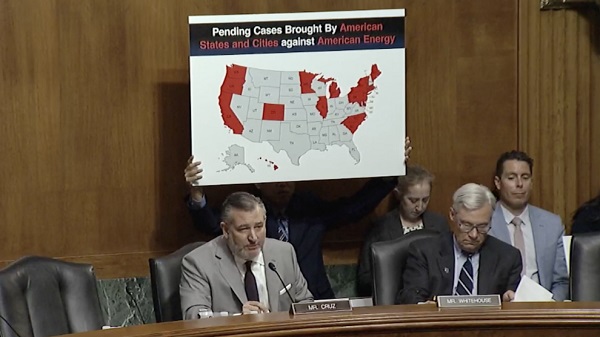
 Energy1 day ago
Energy1 day agoChina undermining American energy independence, report says
-
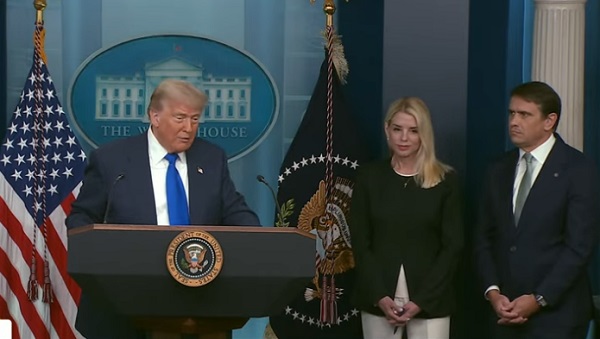
 Business1 day ago
Business1 day agoTrump on Canada tariff deadline: ‘We can do whatever we want’
-

 Automotive1 day ago
Automotive1 day agoElectric vehicle sales are falling hard in BC, and it is time to recognize reality.
-

 Business1 day ago
Business1 day agoEurope backs off greenwashing rules — Canada should take note
-

 Automotive1 day ago
Automotive1 day agoPower Struggle: Electric vehicles and reality
-

 Business7 hours ago
Business7 hours agoCanada Caves: Carney ditches digital services tax after criticism from Trump
-

 Business6 hours ago
Business6 hours agoMassive government child-care plan wreaking havoc across Ontario
